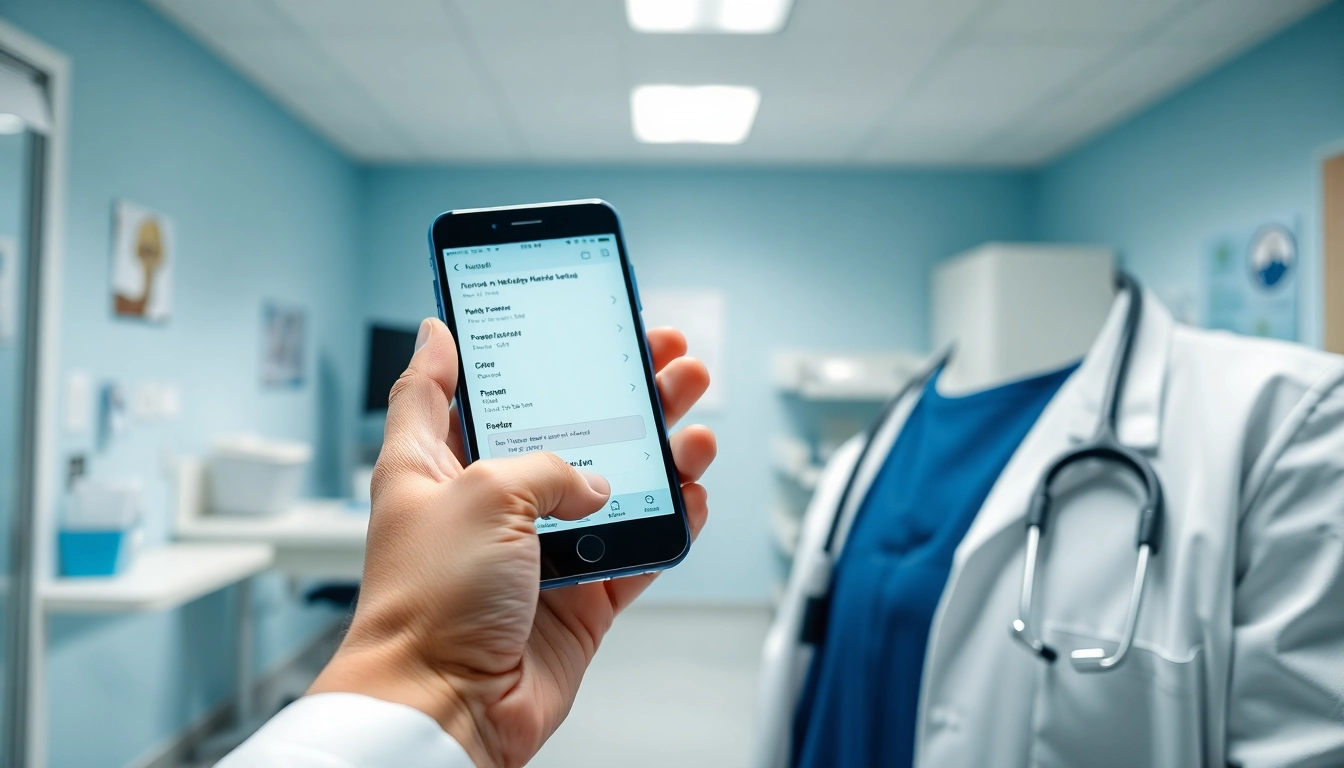Understanding Eprescription Apps for Android
What are Eprescription Apps?
Eprescription apps are digital tools designed to facilitate the process of prescribing medications electronically. Instead of handwriting prescriptions, healthcare providers can input prescription details into an application on their mobile devices. These apps streamline the prescribing process, making it quicker and more efficient for both healthcare professionals and patients. By utilizing these tools, providers can enhance accuracy, minimize errors, and improve patient medication adherence.
Benefits of Using Eprescription Apps for Android
The advantages of using eprescription apps for Android are numerous. First and foremost, they eliminate the need for paper prescriptions, reducing the risk of lost or misinterpreted prescriptions. Additionally, these apps provide real-time access to patient medication histories, allowing for better medication management and reducing the likelihood of adverse drug interactions.
Another significant benefit is the integration capabilities with electronic health records (EHR) and pharmacy systems. This integration not only enhances communication among healthcare providers, but it also expedites the medication dispensing process at pharmacies. Android apps specifically offer portability, making it easy to access patient data from anywhere, whether in a clinic, hospital, or during home visits.
Moreover, using eprescription apps for android improves patient engagement by allowing patients to view prescriptions and refills directly from their devices, encouraging better adherence to their treatment plans. Overall, these benefits underscore the growing reliance on technology to improve healthcare delivery.
How Eprescription Apps Improve Patient Care
Eprescription apps directly contribute to improved patient care in several ways. For starters, they enhance the prescription accuracy through features like built-in drug interaction checks and allergy alerts. This reduces the chances of medication errors, contributing to greater patient safety.
Additionally, these apps often include reminders for patients to refill their prescriptions or take medications as prescribed, promoting adherence and ensuring that patients continue their treatment without interruption. The availability of patient portals within many eprescription apps allows healthcare providers to communicate directly with patients, providing education and support that can lead to better health outcomes.
Features to Look For in Eprescription Apps for Android
User Interface and Experience
A user-friendly interface is crucial for the effectiveness of any app, especially in a high-pressure environment like healthcare. The best eprescription apps for Android minimize the number of steps required to complete a task and employ clear icons and labels. Intuitive navigation ensures that healthcare providers can quickly access the information they need without unnecessary delays.
Data Security and Compliance
Given the sensitive nature of health information, data security is paramount. Eprescription apps must comply with regulations such as the Health Insurance Portability and Accountability Act (HIPAA) to ensure that patient information is kept safe and secure. Features like data encryption, secure authentication, and audit trails are essential for safeguarding personal health information.
Integration with Healthcare Systems
Integration capabilities are a vital aspect of choosing an e-prescribing app. The ability to connect with existing healthcare management systems, laboratories, and pharmacies ensures a seamless workflow. This integration allows for real-time updates to a patient’s health records, medication lists, and treatment plans, thereby improving overall care coordination.
Comparative Analysis of Popular Eprescription Apps
Key Apps Overview
The market for eprescription apps is competitive, with various options available, each offering distinct features catering to different needs. It’s essential to evaluate these apps based on user experience, functionality, and how well they fit within your practice’s workflows. Look for apps that provide comprehensive functionality, such as prescription tracking, patient communication, and intuitive design.
User Feedback and Ratings
User reviews and ratings can provide valuable insights into how well an app performs in real-world scenarios. Listening to the experiences of other healthcare providers can guide your decision-making process. Features that receive high marks often include efficiency, ease of use, and customer support.
Pricing and Accessibility
Pricing structures can vary significantly among different eprescription apps. Some may charge a subscription fee, while others offer a freemium model with core functionalities available at no cost. It’s essential to consider both the initial costs and any recurring fees in your analysis to find an app that fits your budget without sacrificing necessary features. Accessibility, including offline capabilities and compatibility across devices, is also crucial in selecting the right application.
Challenges in Implementing Eprescription Apps for Android
Data Privacy Concerns
While the benefits of eprescription apps are substantial, they are not without challenges. Data privacy concerns are paramount, especially given the increasing number of regulations surrounding patient information. Healthcare providers need to ensure that their chosen applications implement the highest security measures to protect sensitive data from breaches and unauthorized access.
Training Medical Staff
Implementing new technology requires staff training and adjustment. It’s essential to allocate time and resources to train medical personnel on how to use eprescription apps effectively. Providing ongoing learning opportunities can ease the transition and enhance staff comfort with the technology, ensuring a smoother integration into practice.
Technical Issues and Support
Technical challenges can arise when implementing any new system. It’s vital to select an app that offers reliable customer support for troubleshooting and resolving issues. Establishing a clear line of communication with the app’s provider will help address any technical difficulties quickly, minimizing disruptions to the workflow.
Future Trends in Eprescription Apps for Android
Emerging Technologies
The future of eprescription apps will likely be shaped by emerging technologies such as artificial intelligence (AI) and machine learning. These technologies can enhance decision support systems, providing healthcare providers with data-driven insights for better prescribing. AI can help predict trends in medication adherence and outcomes, optimizing treatment plans for better patient care.
Patient-Centered Features
As the healthcare industry continues to focus on patient-centered care, future eprescription apps will likely incorporate features that engage and empower patients. This could include tools for medication tracking, reminders for taking medications, and options for patients to communicate directly with their healthcare providers. Upscaling patient engagement capabilities will improve adherence and health outcomes while fostering a sense of partnership between patients and providers.
Expected Market Growth and Opportunities
The demand for efficient and reliable eprescription solutions is expected to grow significantly. As healthcare policies increasingly favor electronic prescribing due to their benefits in reducing medication errors and improving patient outcomes, more providers are likely to adopt these solutions. Consequently, opportunities exist for app developers to innovate and create products tailored to the evolving needs of healthcare professionals and patients alike, particularly in enhancing usability and integration capabilities.



